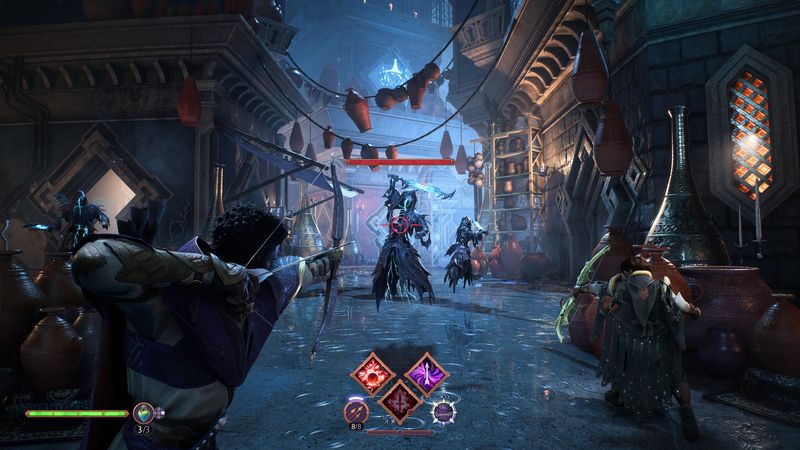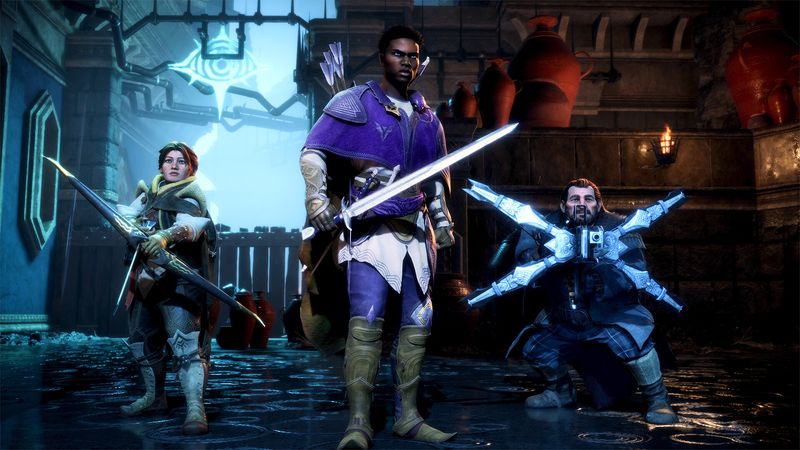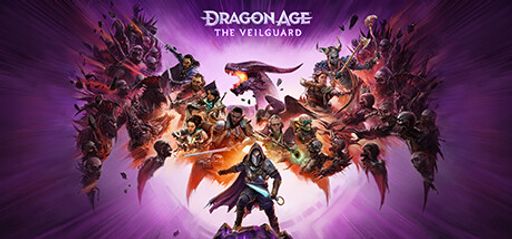Dragon Age: The Veilguard. The latest entry in the quintessential role-playing series, is a mixed bag of commendable combat innovations, phenomenal visuals, and controversial story writing. An RPG that saw its spotlight dimmed rather than brightened by the expectations. Living in the shadow of its previous installment brings a spectrum of emotions.

Gameplay Mechanics
BioWare’s prime focus for The Veilguard, it seems, has been to veer towards a combat-driven experience and multiplayer undertones. The flexibility of a copious number of character customizations and build combinations promises engaging encounters. But, where this triumphs in inception, it falters in execution. The game’s tactical grounding and party interplay, a former strength of the Dragon Age series, has been sidelined. The companion’s roles in battle seem relegated to mere utility rather than sophisticated strategy, reducing most conflicts to relentless button mashing and tiring dodges.
Story and Characters
The game’s narrative sets sail on an exciting premise, alluring us with the promise of a united Veilguard defying the gods. However, the journey appears to navigate troubled waters. With loss of depth and ingenuity in dialogues and a disjointed tone, the depiction of the world and characters is lackluster. Our undoing as players is the game’s presumptuous narratives that ignore the charm of choice—a defining pillar of earlier Dragon Age games. These missing intricacies stifle the beauty of player agency that should flourish in an RPG of this caliber.

Companion characters are seminally diverse; however, they are rarely involved in the central narrative events unless it is their specific quest, disconnecting them from the overall experience. Their personal quests’ obligatory completion to face the final battle strips the players of the freedom to ignore auxiliary characters we don’t connect with. Such elements feel forced and interrupt the immersive flow of the game.
Visuals and Graphics
Visually, Dragon Age: The Veilguard roars with aplomb. With stunningly detailed environments and character designs, the artistic conception of this game is undeniably a treat for the senses. The prodigious enhancement of in-game, in-engine cinematics makes every battle scene a spectacle to behold. Kudos to BioWare’s art and technical teams—The Veilguard takes a formidable stride in the right direction in this department.

Sound and Music
Audio-wise, the game presents an engaging orchestral score, subtly blending with the heroic atmosphere the graphics have built. However, it does fall short of creating impactful moments that tether our emotions to the characters and situations. The voice acting is laudable, lending the characters a bit of the depth that the writing fails to provide.
While the initial foray into The Veilguard’s world might abound in challenges due to the broad spectrum of combat choices and character builds, a sustained play slowly reveals a lack of strategic depths. The apparent linearity and repetitiveness of quest progression might deter players from revisiting the game after the first complete run.

Conclusion
Overall, Dragon Age: The Veilguard is a clear departure from BioWare’s path of narrative-driven RPG games to a combat-obsessed multiplayer model. The flaws outweigh the strengths, particularly when viewed in the light of its illustrious predecessors. Regardless, it’s worth noting the bold steps taken in evolving the combat mechanics and visual presentation, hinting at potential future improvements in the series.
Acknowledging the high expectations, gamer feedback, and the core ethos of the Dragon Age series, I rate Dragon Age: The Veilguard 2.5 stars out of 5. It’s an epic adventure that, unfortunately, gets lost amidst its own ambition.

Add Dragon Age: The Veilguard to your Steam collection today!

